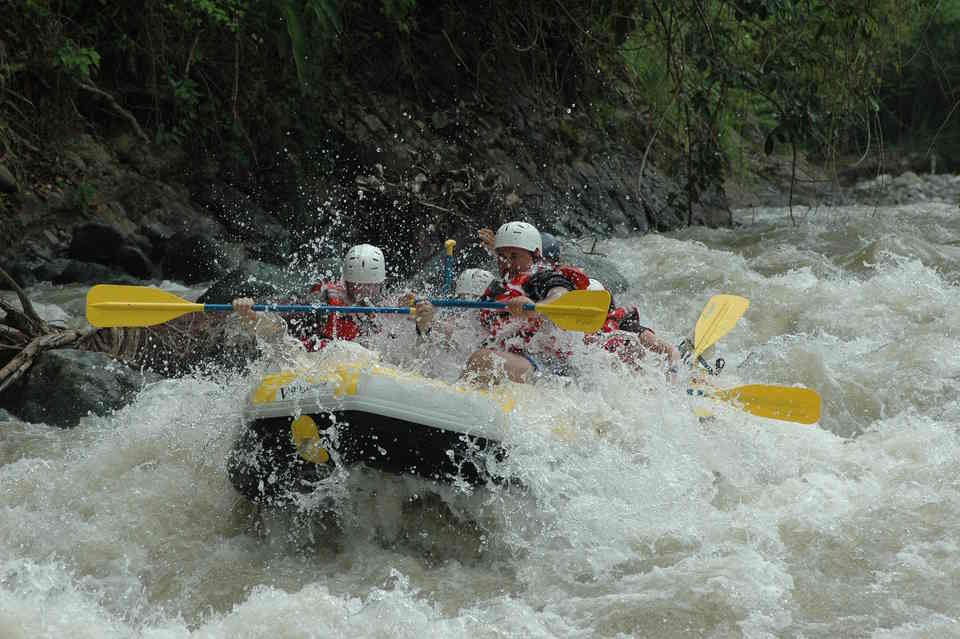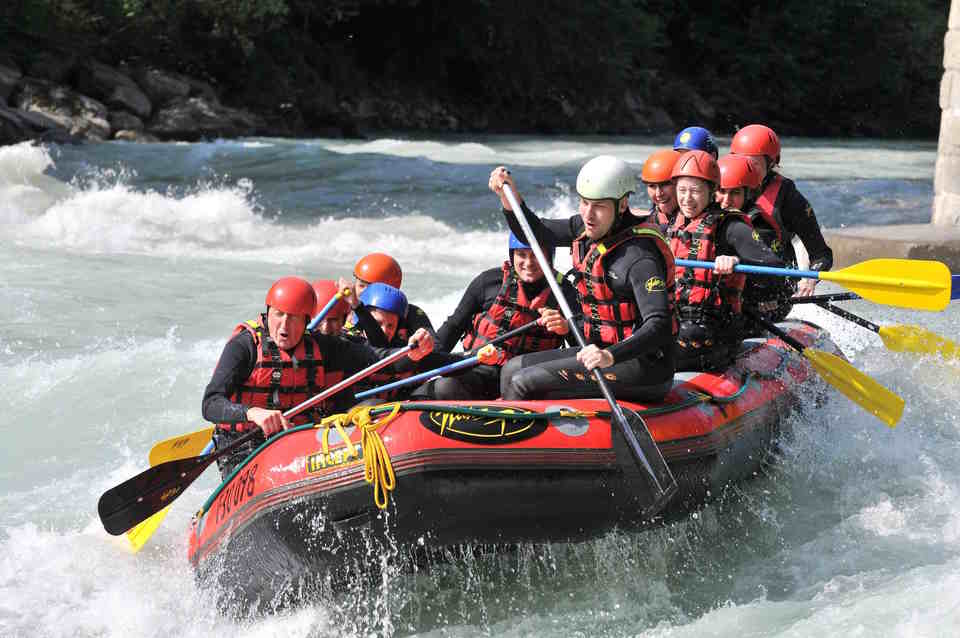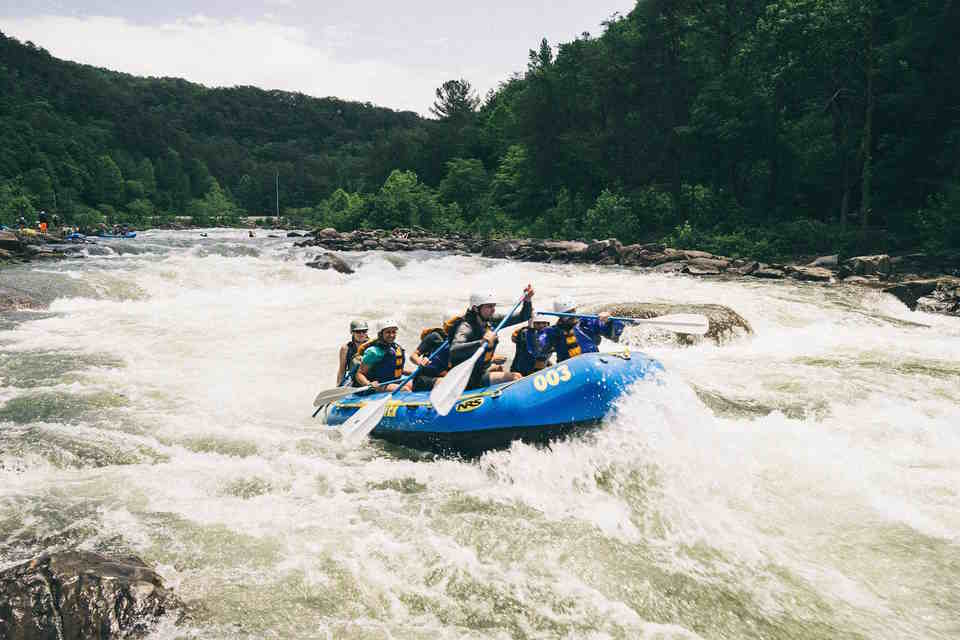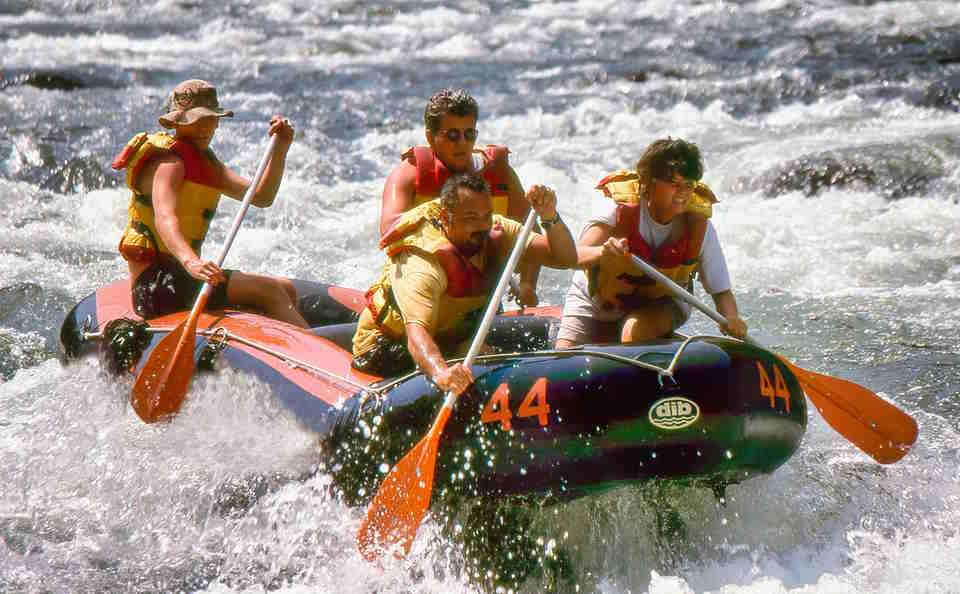Rafting is an exciting outdoor adventure that involves navigating through rough waters on a raft. People go rafting for various reasons, including seeking thrills, enjoying the breathtaking scenery, or building teamwork skills. White water rafting, as it is commonly known, derives its name from the white foamy bubbles and crashing waves that occur in rough rivers, which appear white. During a white water rafting experience, you will face challenges such as rapids with varying degrees of difficulty, often handled by an experienced guide or instructor. While rafting is fun, it comes with inherent risks, including injuries or drowning, but following the rules carefully can mitigate such risks. We will explore rafting, from its definition, reasons people engage in it, to safety measures and how to do it. So, whether you are an experienced rafter or just starting, we will give you the ultimate guide to make your white water rafting experience smooth and enjoyable.
Introduction
Rafting is an exciting way to explore the great outdoors. It is a recreational activity that involves navigating a river or other bodies of water on an inflatable raft. Rafting can be a great way to experience nature up close and personal, as well as to challenge yourself and test your physical and mental limits.
During rafting, individuals board an inflatable raft with a group of other rafters and navigate through rapids and other obstacles on the river. The rafts are typically made from durable materials that can withstand the rough and tumble of whitewater rafting.
There are different classes of river rapids that are graded based on their difficulty level. Rafting can range from easy and relaxing to highly challenging and dangerous. Those who are new to rafting or are looking for a more low-key experience may opt for a rafting trip on calmer waters. Meanwhile, experienced rafters may embark on a more challenging whitewater rafting adventure.
- Rafting can be a thrilling and challenging experience for people of all ages and experience levels
- It involves navigating a river or other bodies of water in an inflatable raft with a group of other individuals
- There are different levels of difficulty for rafting, ranging from easy and relaxing to highly challenging and dangerous
| Class | Difficulty | Description |
|---|---|---|
| Class I | Easy | Small waves, few obstacles |
| Class II | Novice | Straightforward rapids, small drops, clear channels |
| Class III | Intermediate | Rapids with moderate, irregular waves, technical maneuvers required |
| Class IV | Advanced | Powerful rapids with much larger waves, tight passages |
| Class V | Expert | Long, violent rapids, very steep drops, highly complex maneuvers required |
| Class VI | Extreme | Unrunnable rapids, high danger level, not recommended |
Why Do People Go Rafting?
Rafting has become a popular water sport, attracting people from all walks of life. Some people love it for the adrenaline rush, while others simply enjoy being in the great outdoors. Regardless of the reason, there are lots of benefits to be had from this exciting activity.
First and foremost, rafting is an excellent way to stay active and get some exercise. Paddling through rapids, pulling yourself to safety when you fall in, and even just hiking to and from the river can all be very physically demanding. Not only does this challenge your muscles and your cardiovascular system, but it can also help you burn off calories and shed some excess weight.
Another great thing about rafting is that it’s a social activity. You can go with friends, family, or even strangers, and work together to navigate the rapids and keep each other safe. This can help you develop new friendships, build teamwork skills, and even create lasting memories.
- Staying active and getting some exercise
- Becoming more social by rafting with others
Finally, rafting can also be a great way to reduce stress and unwind. Being out in nature, away from the hustle and bustle of modern life, can help you relax and find peace of mind. The sound of rushing water, the fresh air, and the beautiful scenery can all help to soothe your mind and calm your nerves.
| Benefits of Rafting | Why People Love Rafting |
|---|---|
| Staying active and getting some exercise | Feeling that adrenaline rush |
| Becoming more social by rafting with others | Enjoying the great outdoors |
| Reducing stress and finding peace of mind | Developing new friendships and team-building |
Why Is It Called White Water Rafting?
White water rafting, also commonly known as whitewater kayaking, is a popular outdoor recreational activity involving navigating down a river or other body of water in a raft or kayak. The term “whitewater” refers to the bumpy, turbulent and frothy water that is created when water flows quickly over rocks and other obstacles in a river or stream. But why is it called “white water” rafting?
The term “white water” originates from the frothy, white appearance of the water, caused by air being mixed with the water as it rushes over rocks, creating a bubbly, foamy effect. The more rocks and other obstacles there are, the more white water and rapids are created. This is why many white water rafting trips take place on rivers with steep gradients and plenty of rocks and boulders.
Many people believe that the term “white water” may have come about due to the similarity of the water’s appearance to the white, foamy suds that appear when washing clothes. This is because many people used to wash their laundry in rivers and streams, where the swirling water would create white foam that resembled the rapids on a white water rafting trip.
- Whitewater rafting is a thrilling outdoor activity that is enjoyed by many people all over the world.
- The term “white water” refers to the frothy, turbulent water that is created when water flows quickly over rock and other obstacles in a river or stream.
- It is believed that the term “white water” may have originated from its similarity in appearance to suds created when clothing was washed in rivers and streams.
| Pros | Cons |
|---|---|
| It is a fun and exciting outdoor activity that provides an adrenaline rush | There are potential risks involved such as injury or even death if not done properly or in unsafe conditions |
| It allows you to connect with nature and appreciate the beauty of rivers and scenery | It can be physically tiring and demanding, especially for those who are not in good shape or have health issues |
| It is a great bonding experience with friends or family | It may be expensive, especially if you need to rent equipment or hire a guide |
What Happens in White Water Rafting?
White water rafting is an exciting experience for all adventure lovers. When you go white water rafting, you’ll embark on a thrilling journey down a river full of rapids and waves. White water rafting involves a team of rafters, a guide, a raft, and white water.
The first step in white water rafting is to put on your safety gear. Your guide will provide you with the necessary safety equipment, which includes a life jacket, helmet, and paddle. After you’ve put on your gear, you’ll receive a brief safety talk from your guide. This talk is designed to give you an idea of what to expect during your trip, and how to stay safe while on the river.
Once you’ve received your safety talk, you’ll climb aboard the raft with your team and get ready for your adventure. As you navigate the white water, your guide will call out commands to help you steer the raft. You’ll need to work together as a team to paddle in unison and avoid obstacles like rocks and fallen trees.
- Some common things that happen in white water rafting are:
- Getting splashed and soaked by waves
- Feeling your heart race as you approach a rapid
- Working together as a team to navigate the river
- Enjoying the thrill of adventure and the beauty of nature
What Are the Risks of Rafting?
White water rafting is an adventurous activity that attracts people of all ages and backgrounds. It’s a thrilling experience that allows you to connect with nature and push your limits. However, while rafting can be exciting, there are also risks involved. It’s important to understand the potential dangers so that you can take the necessary precautions to stay safe.
One of the biggest risks of rafting is the possibility of capsizing. This can occur when the raft hits a rock or when the water becomes too rough. When this happens, people can be thrown out of the raft and into the water. If you’re not a strong swimmer or if the water is particularly rough, this can be very dangerous.
Another risk is the possibility of getting stuck or trapped in the raft. This can happen if you’re not strapped in properly or if the raft becomes snagged on debris. If you’re trapped in the raft, you may not be able to escape if the water is moving too quickly.
- Ensure you have the right gear: Wearing a life jacket is a must for safety. Even if you are a great swimmer, currents in the river are unpredictable, which makes it important to have a life jacket on. Other important gear includes special shoes for rafting that give you a good grip, helmet, and a wetsuit to keep you warm.
- Follow the guide’s instruction: Pay attention to the instructions given by your guide before and during the ride, and follow them carefully. Understanding how to paddle and sit in the raft, as well as when to hold on or let go of the raft can be critical to your safety.
What Are the Rules of Rafting?
Rafting is an adventure sport that involves navigating rough waters on an inflatable raft. Rafting is a thrilling activity that attracts many adventure-seekers who want to experience the adrenaline rush of bouncing through white-water rapids. However, before embarking on a rafting trip, it’s important to know the rules and regulations to ensure your safety and the safety of your fellow rafters. We will discuss the rules of rafting.
- Wearing appropriate gear: It’s essential to wear proper gear when rafting. This includes a helmet, a personal flotation device (PFD), and appropriate footwear. Your PFD should be snugly fitted and fastened securely, and it should not ride up when you’re in the water. Your footwear should be sturdy, with good traction to prevent slipping.
- Listen to your guide: Your rafting guide is an experienced rafter who understands the river’s dynamics and knows how to navigate it safely. Listen carefully to their instructions, and follow their commands. If they tell you to paddle, paddle, and if they tell you to stop, stop.
- Stay in the boat: Try to keep yourself in the boat at all times, and avoid leaning over the edge. If you fall out of the boat, try to stay upstream of it and swim towards it. Your guide will then help you get back in.
Rafting is an exhilarating activity that requires proper safety measures and respect for the river’s power. Keep these three rules in mind when you’re out on the water, and you’ll be sure to have a safe and memorable rafting experience.
How Do You Do Rafting?
Rafting is an exciting outdoor activity that involves navigating through rough waters in a raft. It’s a great way to challenge yourself and have fun with your friends and family. If you’re planning to go rafting, there are some things you need to know about how to do it properly. We’ll cover some essential tips and techniques for an enjoyable rafting experience.
1. Choose the Right Raft:
Before you hit the water, it’s essential to choose the right raft. You can either opt for an inflatable raft or a hard-shell raft depending on the kind of water you’ll be navigating and your level of experience. Inflatable rafts are ideal for beginners and can handle mild to moderate rapids, making them suitable for leisurely rafting trips. A hard-shell raft, on the other hand, is better for advanced rafters and can handle more challenging rapids. It’s always better to consult with an expert before choosing a raft to ensure your safety.
2. Wear Appropriate Gear:
Having the right gear is crucial to ensure your safety when rafting. You’ll need to wear a wetsuit to protect you from the cold water, as well as a life jacket to keep you afloat in case you fall off the raft. Also, don’t forget to wear a helmet to protect your head from any impact during the ride. Other equipment you may need includes paddling gloves, water shoes, and sunglasses to protect your eyes from the glare of the sun and water.
3. Learn the Techniques:
Before you start rafting, it’s essential to learn some basic techniques that will help you navigate the rapids safely. You’ll need to learn how to paddle efficiently and how to steer the raft using different strokes. Familiarize yourself with the different types of rapids and how to handle each one. You can also practice flipping the raft and getting back in safely, as this is a common occurrence in rafting.
In conclusion, while rafting can be a lot of fun, it’s also important to take the necessary precautions to ensure your safety. Always choose the right raft, wear appropriate gear, and learn the necessary techniques before getting into the water. Remember to follow the rules of the rafting company and stay alert at all times. With these tips, you’ll be well on your way to having a thrilling and safe rafting experience.














